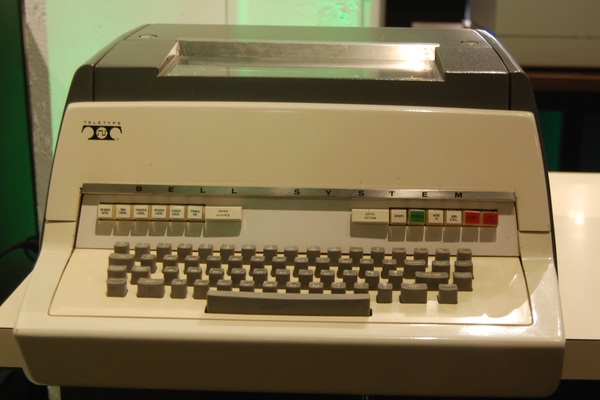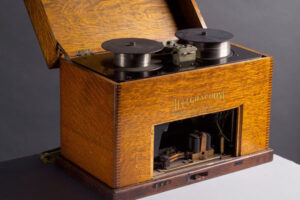The Teletype is a forgotten communication technology that played a significant role in shaping the way we exchange information. Despite its past widespread usage, it has now been largely overlooked and forgotten. In this article, we aim to unravel the history, functioning, and impact of Teletypes.
Table of Contents
Historical Background
Origin of Teletypes
The origin of Teletypes can be traced back to the late 19th century when they emerged as a revolutionary communication technology. Developed as an improvement on the telegraph, Teletypes enabled the transmission of written messages over long distances using electromechanical systems. With the introduction of Teletypes, the process of communication was revolutionized, allowing for quicker, more efficient, and more reliable transmission of information.
Importance During World War II and Beyond
During World War II and the subsequent decades, Teletypes played a crucial role in communication. They were extensively used by military forces, governments, news organizations, and businesses worldwide. Teletypes offered a vital means of sending and receiving important messages in a timely manner, allowing for effective coordination and information dissemination. Their reliable and secure nature made them indispensable in times of conflict and rapid social and technological advancements.
Decline Due to Newer Communication Technologies
However, despite their historical significance, Teletypes eventually fell into decline due to the advent of newer communication technologies. The rise of fax machines, computers, and the internet brought about more advanced and convenient alternatives, rendering Teletypes obsolete. These newer technologies offered faster transmission speeds, greater storage capacity, and the ability to transmit not only text but also multimedia content. As a result, Teletypes gradually lost their prominence and were overshadowed by these more advanced platforms.
Mention the Rise of Newer Communication Technologies
The rise of newer communication technologies in the late 20th century contributed to the decline of Teletypes. These advancements opened up new possibilities and offered more efficient ways of transmitting and receiving information. As fax machines, computers, and the internet became more accessible and widely adopted, they surpassed Teletypes in terms of speed, versatility, and overall capabilities. While Teletypes once held a significant position in communication systems, they became overshadowed by the increasingly pervasive presence of digital technologies.
In the following sections, we will delve deeper into the functioning, impact, and legacy of Teletypes. Although they may now be seen as a forgotten communication technology, it is important to recognize their historical importance and the role they played in shaping the communication landscape we know today.
How Teletypes Work
Teletypes, one of the forgotten communication technologies, were an integral part of history, playing a crucial role in communication during the late 19th century and beyond. These machines, often overlooked today, had a significant impact on various industries, especially newsrooms, businesses, and government agencies. To understand their significance, it is important to grasp the basic mechanics and components of Teletypes, as well as the process of transmitting and receiving messages.
At its core, a Teletype machine is a communication device that allows the transmission of text messages over long distances. It consists of several key components, including a keyboard, printer, and a mechanism for transmitting and receiving messages. When a user types a message on the keyboard, the keystrokes are converted into electrical signals by a series of relays and switches within the machine. These electrical signals are then transmitted over a telegraph wire to its intended recipient.
Upon receiving the transmitted signals, the recipient’s Teletype machine converts them back into text, which is then printed onto paper. The paper used by Teletypes is often in the form of punched paper tape, where holes are punched to represent the characters being transmitted. This punched paper tape not only served as a medium for transmitting messages but also as a backup storage mechanism.
The use of telegraph wires was vital for the operation of Teletypes. These wires enabled long-distance communication, allowing messages to be transmitted across vast distances. The use of punched paper tape added an extra layer of convenience, as it allowed messages to be stored and transmitted more efficiently.
Understanding how Teletypes work sheds light on their historical importance and significance in shaping communication as we know it today. These machines revolutionized the way information was disseminated, allowing for faster and more efficient communication across distances. However, as newer communication technologies such as fax machines, computers, and the internet emerged in the late 20th century, Teletypes gradually declined in usage and were eventually replaced by more advanced technologies.
Despite their decline, Teletypes have left a lasting legacy in the field of communication. Their impact on the development of modern communication systems cannot be overlooked. It is important to remember and appreciate the contributions of forgotten technologies like Teletypes, as they paved the way for the innovations and advancements we enjoy today. By understanding their mechanics and how they worked, we can truly appreciate the historical significance and influence of Teletypes in communication history.
Applications and Impact
Teletypes found their place in various industries due to their versatility and reliability. These machines revolutionized communication in newsrooms, businesses, and government agencies, streamlining the dissemination of information.
In newsrooms, Teletypes enabled fast and direct transmission of news stories from different parts of the world. Journalists could receive breaking news in real-time, allowing for prompt reporting and keeping the public informed. The speed and efficiency of Teletypes played a crucial role in shaping the journalism landscape, accelerating news cycles and enabling rapid response to unfolding events.
Businesses also benefited greatly from Teletypes. They allowed for efficient communication within and between companies, facilitating coordination and decision-making. Orders, invoices, and other important documents could be sent quickly and accurately, expediting business transactions. Teletypes also connected businesses internationally, enabling smoother trade and fostering global collaboration.
Government agencies relied on Teletypes for secure and reliable communication, particularly in diplomatic and military contexts. Sensitive information could be transmitted quickly and confidentially, enhancing national security. Teletypes played a crucial role during world conflicts, facilitating wartime communication between different branches of the military and enabling strategic coordination.
The impact of Teletypes on information dissemination and international communication cannot be overstated. These machines bridged geographical distances, allowing people and organizations to stay connected across vast spaces. They fostered cultural exchange, trade, and global collaboration, ultimately shaping the interconnected world we know today.
As we reflect on the applications and impact of Teletypes, we gain a deeper appreciation for their role in the advancement of communication technology. While these machines have been largely forgotten, it is important to recognize their historical significance and the foundations they laid for the development of subsequent technologies. The lessons learned from Teletypes continue to shape innovation in communication systems, reminding us to value and preserve the legacy of our technological past.
Decline and Legacy
The late 20th century marked the decline of Teletypes, as newer and more advanced communication technologies began to emerge. One of the contributing factors to this decline was the rise of fax machines, which introduced a more convenient and efficient way of transmitting written documents. Fax machines allowed for the immediate transfer of information, eliminating the need for the time-consuming process of typing and transmitting messages through Teletypes.
Additionally, the advent of computers played a significant role in the decline of Teletypes. Computers revolutionized communication by providing faster and more versatile methods of exchanging information. With the increasing popularity of computers, the use of Teletypes became less practical and efficient.
Perhaps the most significant factor in the decline of Teletypes was the widespread adoption of the internet. The internet opened up new possibilities for communication, enabling people to connect and exchange information across vast distances in real-time. Email, instant messaging, and online collaboration tools allowed for seamless and instantaneous communication, rendering Teletypes obsolete in the digital age.
However, despite their decline in popularity, Teletypes left a lasting legacy in shaping modern communication technology. They laid the foundation for the development of more advanced communication systems, such as fax machines, computers, and the internet. The mechanics and principles behind Teletypes influenced the design and functionality of these technologies, leading to the creation of faster, more efficient, and interconnected communication networks.
In conclusion, the decline of Teletypes in the late 20th century can be attributed to the rise of fax machines, computers, and the internet. These advancements provided more convenient and efficient methods of communication, rendering Teletypes obsolete. However, it is important to reflect on the significance and legacy of Teletypes in shaping modern communication technology. They paved the way for the development of more advanced systems and played a crucial role in the evolution of how we communicate today.
Conclusion
The Teletype was a groundbreaking communication technology that played a significant role in shaping the way people communicated in the past. It revolutionized the transmission of messages and had a profound impact on various industries, including newsrooms, businesses, and government agencies. Despite its once widespread use and historical significance, the Teletype has been largely forgotten and overlooked in today’s era of advanced communication systems.
In conclusion, it is important to remember and appreciate the impact of forgotten communication technologies like the Teletype. These technologies paved the way for the development of modern communication systems that we take for granted today. By understanding the historical importance of the Teletype, we can gain a deeper appreciation for the strides made in communication technology over time.
The decline of Teletypes in the late 20th century was inevitable, as newer technologies such as fax machines, computers, and the internet emerged. These advancements offered faster and more efficient communication methods, rendering Teletypes obsolete. However, we should not dismiss the significance of the Teletype in shaping the way we communicate today.
The legacy of the Teletype lies in its impact on the development of modern communication systems. It served as a precursor to the technologies we use today and demonstrated the possibilities of long-distance communication. The Teletype’s use of telegraph wires and punched paper tape laid the foundation for future innovations in communication.
As we look back at the Teletype’s historical importance and subsequent decline, we are reminded of the need to preserve and remember the advancements made in the field of communication technology. By recognizing the achievements of forgotten technologies like the Teletype, we can better appreciate the transformative nature of communication systems and better understand our present.




